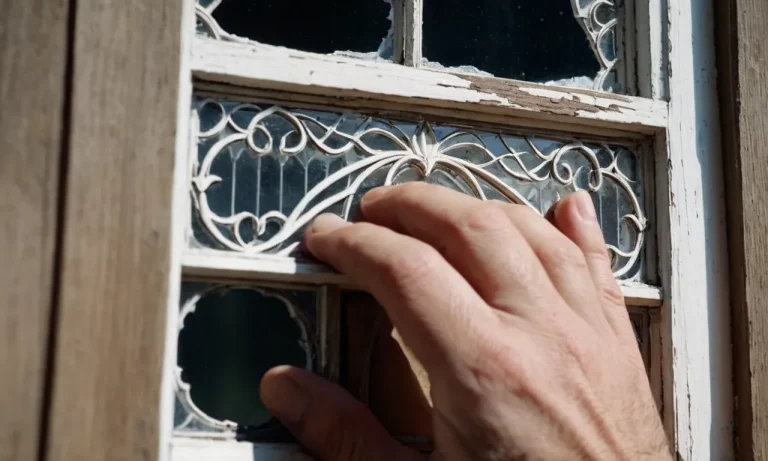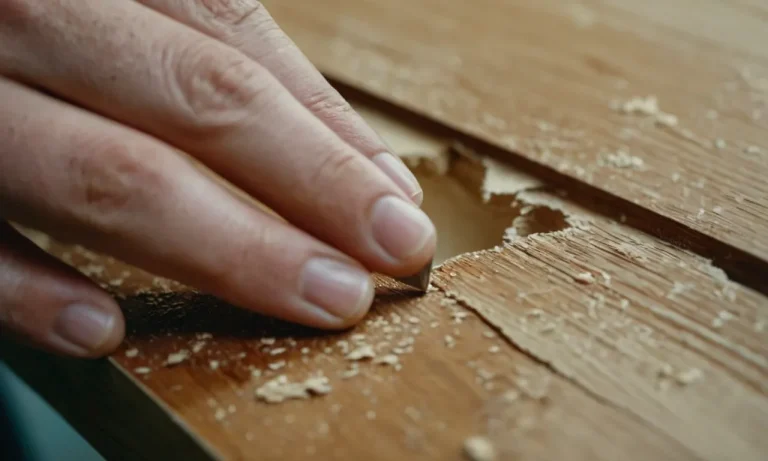Can You Paint Your License Plate?
Having a customized license plate can be a great way to express your personality. But what about taking it a step further and painting your license plate? In this comprehensive guide, we’ll explore whether painting your license plate is legal where you live.
If you’re short on time, here’s a quick answer to your question: Painting your license plate is illegal in most states. While some modifications like plate frames are acceptable, physically altering the plate by painting it can lead to fines or having your registration revoked.
Below we’ll go over the legal issues around painting license plates, reasons why you may want to paint it, what techniques people use to paint plates, and steps to properly paint your license plate if it is legal where you live.
Is It Legal to Paint Your License Plate?
Many car enthusiasts are often curious about the possibility of customizing their license plates by painting them. However, before embarking on such a project, it’s important to understand the legal implications involved.
Laws regarding license plates vary from state to state, so it’s crucial to research the specific regulations in your area.
Laws Vary by State
Each state has its own set of rules and regulations when it comes to license plates. While some states allow certain modifications or customization, others have strict guidelines in place. It is essential to check with your local Department of Motor Vehicles (DMV) or the appropriate governing body to understand the specific laws in your state.
For example, in some states, altering the appearance of a license plate, including painting it, is strictly prohibited. Violating these regulations can result in fines, penalties, or even the suspension of your vehicle registration.
Therefore, it is crucial to follow the rules set forth by your state’s DMV to avoid any legal consequences.
Why Painting Plates is Prohibited
The primary reason why painting license plates is generally prohibited is to maintain the readability and visibility of the plate. License plates serve an important function in identifying vehicles and ensuring public safety.
By painting a license plate, the visibility of the characters and numbers can be affected, making it difficult for law enforcement agencies to identify the vehicle in case of any violations or emergencies.
Additionally, license plates often contain reflective materials that enhance their visibility, especially during nighttime. Painting over these materials can diminish their effectiveness, making it harder for other drivers and law enforcement officers to see the plate clearly.
Moreover, license plates also serve as a means of easy identification and traceability for stolen vehicles. By altering the appearance of the license plate, it becomes easier for thieves to disguise the stolen vehicle, making it harder for law enforcement to identify and recover it.
It is important to adhere to the regulations set by your state’s DMV to ensure the proper functioning of license plates and maintain public safety on the roads.
Reasons People Paint Their License Plates
Customization and Self-Expression
One of the main reasons why people choose to paint their license plates is for customization and self-expression. By painting their license plates, individuals can add a personal touch to their vehicles and make them stand out from the crowd.
Whether it’s a favorite color, a unique design, or a personalized message, painting a license plate allows people to showcase their individuality and creativity. It’s a fun and creative way to make their vehicle truly their own.
Making Plates More Visible
Another reason why some people opt to paint their license plates is to make them more visible on the road. While license plates are typically designed to be highly visible, painting them with bright colors or reflective paint can enhance their visibility, especially in low-light conditions.
This can be particularly beneficial for drivers who live in areas with heavy fog, frequent rain, or other weather conditions that may affect visibility. By making their license plates more visible, drivers can increase their safety on the road.
Techniques for Painting a License Plate
Materials Needed
Before you begin painting your license plate, it’s important to gather all the necessary materials. You will need:
- License plate
- Paint (acrylic or enamel)
- Paintbrushes
- Masking tape
- Sandpaper
- Primer
- Clear coat
Make sure to choose high-quality materials to ensure a clean and professional finish.
Prepping the Surface
Preparing the surface of your license plate is crucial for a successful paint job. Start by cleaning the plate thoroughly to remove any dirt or debris. You can use soap and water or a mild cleaner for this step. Once the plate is clean, use sandpaper to lightly roughen the surface.
This will help the paint adhere better.
Next, use masking tape to cover any areas you don’t want to paint, such as the registration stickers or any text on the plate. This will ensure clean lines and a polished look.
Painting Techniques
When it comes to painting your license plate, there are a few techniques you can use. One popular method is to use stencils or decals to create intricate designs or patterns. You can find various stencil designs online or create your own using a cutting machine or by hand.
If you prefer a simpler approach, you can also paint the entire plate a solid color. Start by applying a thin layer of primer to the plate to create a smooth surface for the paint to adhere to. Once the primer is dry, apply the paint evenly using a paintbrush.
Multiple thin coats are better than one thick coat to avoid drips and uneven coverage.
Allow each coat to dry before applying the next one. This will help prevent smudging or smearing of the paint. Once you’re satisfied with the color and coverage, let the paint dry completely before moving on to the next step.
Clear Coating for Protection
After the paint has dried, it’s important to apply a clear coat for added protection. This will help prevent chipping, fading, and peeling of the paint over time. Clear coats are available in spray cans or can be applied with a brush.
Apply a thin and even layer of clear coat to the entire surface of the license plate.
Allow the clear coat to dry completely before handling or mounting the license plate. This will ensure a durable and long-lasting finish.
Remember, laws regarding license plate customization vary from state to state. Before painting your license plate, make sure to check the regulations in your area to ensure compliance.
How to Legally Paint Your Plate
Making Sure It’s Legal in Your State
Before you start painting your license plate, it’s important to check the regulations in your state to ensure that it’s legal to do so. Each state has its own specific laws regarding license plates, including rules about their appearance.
Some states may allow you to personalize your license plate with custom designs or colors, while others may have strict guidelines on how license plates should look.
To find out the regulations in your state, you can visit the website of your state’s Department of Motor Vehicles (DMV). They will provide you with the necessary information and guidelines to ensure that you are in compliance with the law.
Pro tip: It’s always better to be safe than sorry. If you’re unsure about whether or not you can paint your license plate, it’s best to contact your local DMV for clarification.
Following Size and Font Rules
When painting your license plate, it’s crucial to follow the size and font rules set by your state. These rules dictate the dimensions of the license plate and the specific font style and size that should be used for the characters.
Using the wrong size or font could result in fines or penalties, as it may make your license plate difficult to read or identify. By adhering to these rules, you can ensure that your license plate remains visible and legible at all times.
Pro tip: If you’re unsure about the correct size or font to use, you can find this information on your state’s DMV website or consult with a professional license plate painter who is familiar with the regulations in your area.
Using Reflective Paints
In some states, using reflective paints on your license plate may be required. Reflective paints allow your license plate to be easily visible, especially in low-light conditions. These paints contain special additives that reflect light, making your license plate more noticeable to other drivers and law enforcement.
Using reflective paints not only helps you stay within the legal requirements but also enhances the safety aspect of your vehicle. It increases the visibility of your license plate, reducing the chances of accidents or misunderstandings on the road.
Pro tip: When choosing reflective paints, ensure that they meet the standards set by your state. Look for paints that have been specifically formulated for license plates and have been tested for durability and visibility.
Avoiding Prohibited Content
While you may have the freedom to personalize your license plate, it’s important to avoid using prohibited content. Many states have restrictions on what can be displayed on a license plate, such as offensive language, symbols, or references to illegal activities.
By avoiding prohibited content, you can ensure that your license plate complies with the law and doesn’t offend or upset others on the road. It’s always a good idea to choose a design or message that is positive, fun, or meaningful to you without crossing any boundaries.
Pro tip: To know the specific guidelines on prohibited content, refer to your state’s DMV website or contact them directly. They will provide you with a list of prohibited words, symbols, or references that should be avoided on your license plate.
Conclusion
While painting your license plate can allow you to customize it to your liking, it’s important to check your local laws first. Painting over the plate details or altering it physically is illegal in most states due to visibility and identification issues.
However, if you live somewhere that does allow painting plates, follow the proper techniques to ensure the plate remains legal and readable. With some creative thinking, you can likely find legal ways to customize your plate within the rules of your state.







